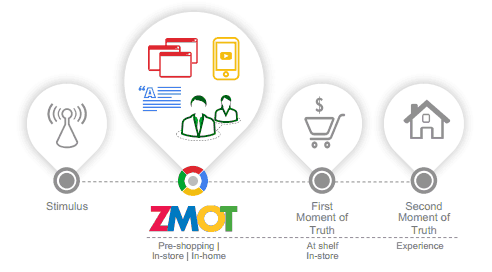The New Reality of Marketing in Healthcare: Zero Moment of Truth Validates the Need for Consumer Education
Organizations that offer transparency through valuable consumer education will win customers and increase both market share and brand loyalty.
Shifting Landscape of Healthcare
The healthcare industry has seen more than its fair share of change in the last decade. Now, with the Affordable Care Act (ACA), the changes are coming faster than ever. One key aspect of the ACA is the Medical Loss Ratio or the 80/20 rule, which mandates that insurance companies spend no less than 80% of premium dollars on medical care and consumer health improvement, limiting what can be spent on overhead such as traditional marketing activities (1).
Meanwhile, healthcare customers are changing too, growing accustomed to more information, faster, from reliable sources, before making health-related decisions. Perhaps surprisingly, baby boomers are a huge part of this push (they’re as active in online healthcare-related searches as any other adult demographic) (2). As the industry shifts, marketers are scrambling to re-invent the way they reach their customers.
Zero Moment Of Truth
Google has documented a crucial step in this new purchase process: the Zero Moment of Truth (ZMOT). After seeing a marketing message, the customer often goes online, immediately searching for content through mobile devices, to educate themselves before purchasing.

- 88% of U.S. consumers now engage in the ZMOT prior to making their final decision
- In 2011, consumers consulted an average of 10.4 sources before purchasing (twice as many as sources as the year before)
- ZMOT sources, like search engines, highly influence shopper’s decision-making (3)
- 79% of consumers now say they use a smart-phone to help with shopping (4)
While the data is compelling, the most important aspect of consumer education may be that consumers exposed to such information, freely provided, are 97% more likely to tell friends and are 94% more satisfied with their purchase (3).
Awareness vs. Education
Educating the customer at the ZMOT is a vital step that requires a new skill set—capabilities not possessed by yesterday’s ad agencies.
Education, in marketing terms, is when a message goes beyond creating an awareness of a product or service. The focus shifts from selling features and benefits to providing the consumer with a deeper understanding of the problem and the product or service. At Allen, we’ve experienced the rise of consumer education firsthand, working with innovative Fortune 500 companies, many in the healthcare sector, to support new product lines and complement traditional marketing.
In the insurance industry, marketers are seeing the same changes. According to one industry report, “Companies are focusing on content to improve consumer health instead of traditional ad campaigns. Educating consumers on how health insurance exchanges work is a great example.” The report concludes that such resources not only “earn consumer love and strengthen brand recognition” but also help drive improved health outcomes, thus complying with the 80/20 rule (5).
Recently, Allen helped Hawaii Health Connector develop its own educational campaign. This innovative program used direct-to-consumer education, as well as internal messaging, to help employees understand the impact of the ACA and better serve customers. The program’s manager, Chris Gierke, summarized the impact this way: “Consumers want to feel more confident to make good decisions instead of relying on other people…. As we educate consumers and teach them what the changes are, and how it affects them, they are now empowered to make the best decisions for themselves.”
The new healthcare consumer is looking for information to understand healthcare reform and its effects. Yes, it is a tumultuous time. Forward-thinking companies are taking advantage, however, using powerful, new forms of consumer education, to increase their market-share and brand loyalty, and, most important, improve satisfaction and outcomes across the industry. At Allen, we have developed best-practices for educating consumers in a way that engages them and gets them the information that they are looking for. Incorporating bite-size media with ease of accessibility and information provided at the point-of-need can help you gain loyal consumers.
If you are interested in having a conversation with one of our learning directors about what the rise of ZMOT and consumer education could mean to your organization contact us here.
Sources:
- U.S. Department of Health & Human Services. Value for your Premium Dollar
- Google Think Insights. Inside Look at Boomer Healthcare Consumers
http://www.thinkwithgoogle.com/research-studies/inside-look-at-boomer-healthcare-consumers.html
- Google Think Insights. The Zero Moment of Truth Macro Study
http://www.thinkwithgoogle.com/research-studies/the-zero-moment-of-truth-macro-study.html
- Google Think Insights. Winning the Zero Moment of Truth eBook
http://www.thinkwithgoogle.com/research-studies/2011-winning-zmot-ebook.html
- Google Think Insights. How Health Insurers Can Truly Partner with Consumers
http://www.thinkwithgoogle.com/articles/how-health-insurers-can-partner-with-consumers.html






Comments 1
Love the thought behind this blog. The data and insights on the shift in consumer attitudes and how its’ impacting consumer education is very compelling.